Co-written by Sarah Herron and Morgan Tilton
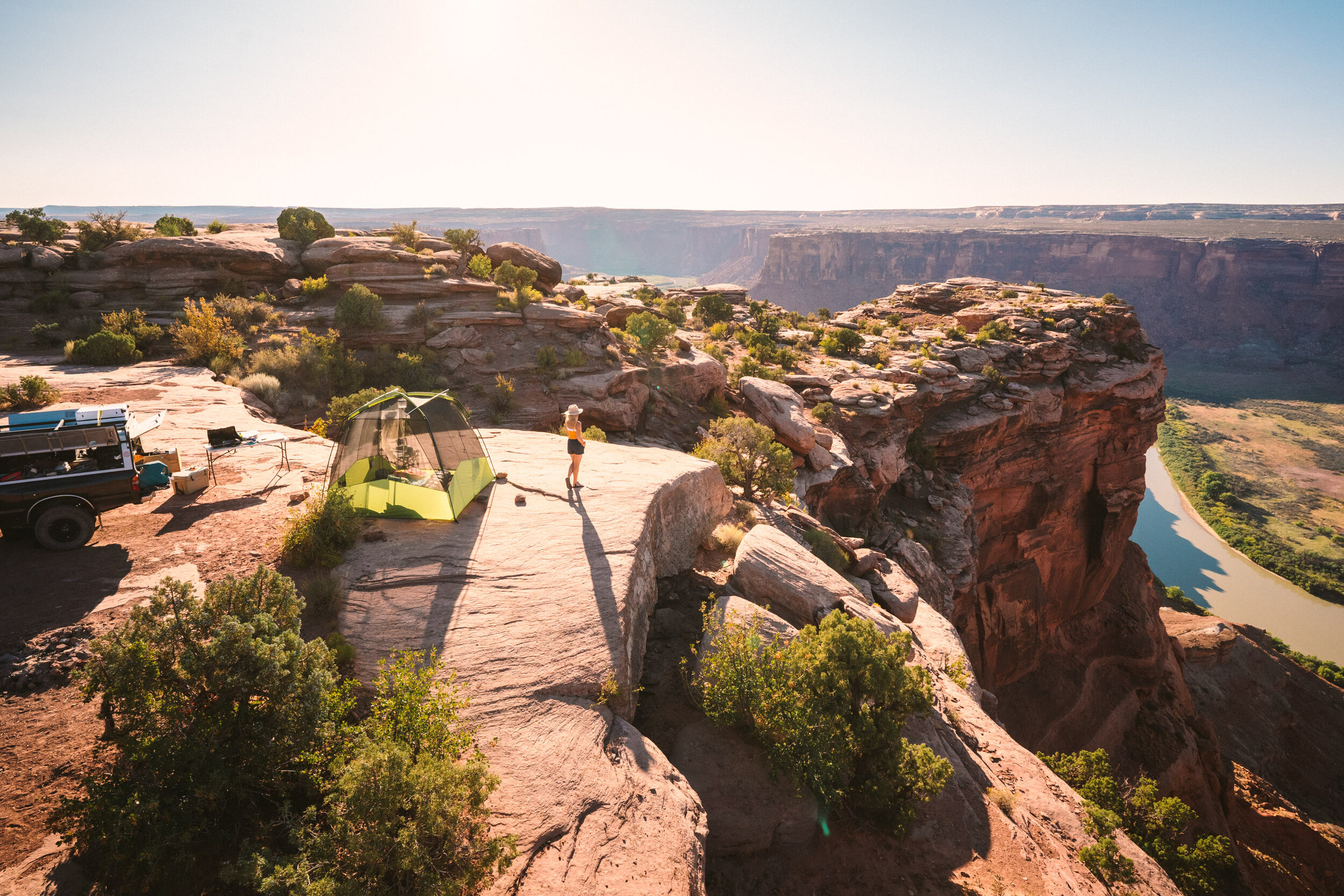
Stand-up paddleboarding on rivers, backpacking through high meadows, skiing and uphilling: I love ALL of these exciting ways of being alive outside. But, no amount of movement can replace my deep need for rejuvenation. We all need active and passive recovery mixed into our bustling days and weeks.
For me, camping is my main method of personal reset. The crisp air, smell of pine, and stream’s melody beneath the stars creates a soul-easing and relaxing place to just BE. You can bask in the views and wander around your camp. Learning to pitch a tent, cook meals outside, and rely on yourself for a few days in nature is a perfect way to reconnect with you. It’s an opportunity to rediscover and lean into your self-reliance and personal abilities.
And, it doesn’t have to be completely bare-bones. You get the benefit of taking some home comforts along with you. You can read and learn to campfire cook with a Dutch oven, pans, or use various types of stoves. Bring coolers full of tasty goodies, camp chairs, cameras, and fishing rods. You can pack your plushest pillow and multiple sleeping pads—no one is counting!
Camping should be and can be experienced by anyone. And there are so many diverse ways to introduce yourself to camping—you can dip your toes in the water or dive into the deep end. Regardless of the approach, the benefits are the same.
My First Experience Camping
My first-ever camping experience was as an adult, and it was love at first pitch. My friend Alex and I went to Treebones Resort, in Big Sur, which was the perfect intro for me. We packed all of the necessary camping gear and pitched our own tent, but it was on a private property that boasted modern amenities—even a high-end sushi restaurant. It was definitely glamping, and delivered the most epic scenery in all of Big Sur.
Camping: “Developed” versus “Dispersed”
First, a lesson in two general types of camps. Developed campgrounds are constructed with facilities for camping, such as garbage cans and group shelters or restrooms. Most require a fee and prices vary. Developed campgrounds are privately- or publicly-owned, so they also exist on land managed by the Bureau of Land Management (BLM) or by the United States Forest Service (USFS).
Dispersed camping is when you camp on public land away from developed facilities. Some areas might be closed to dispersed camping, due to the protection of wildlife species or natural resources, so look for on-site signage or online notifications. But for the most part, public land is open for anyone to camp in. To help you research, here is an interactive map of BLM land and another map offered by the USFS.
But be careful–choosing a dispersed campsite takes calculated consideration, in order to not harm the earth, waterways, or wildlife. If fragile vegetation or organisms are trampled on, they may not ever recover. EVER. The primary rule of thumb is to establish your camp where the earth is already impacted by campers. That way, further use will not enhance those burdens. You’ll be able to recognize a previously used location. Try to not enlarge those campsite footprints. The vegetation cover is usually gone, and there might be a rock fire-ring or logs for sitting on. Aim to build camp on durable surfaces, such as rock, sand, or gravel. Avoid setting up house on lush or wet meadows, wildflowers, and living soil, otherwise known as cryptobiotic crust. Living soil has a blackish tint and obscure crust, which is full of organisms that are living on the top of the sand. Also, be sure to camp away from where you’ll disturb wildlife, and 200 feet away from any water sources.
Tips for Camping
As you pack for your campout, you don’t need to feel embarrassed about toting cozy items from home. If you’re nervous or not completely comfortable in the outdoors bring a few things that will make you feel at ease. That could be a blanket, slippers, string lights, warm foods, hot cocoa, or a journal, to name a few. However, camping should not be about bringing ALL of your domestic amenities. It’s refreshing to streamline our attention and possessions, which we can return to later.
If you’re venturing to a campground where reservations are recommended or it’s a popular weekend getaway, plan ahead. For instance, most campgrounds in Big Sur are reservation-only, and the reservations typically fill up several weeks in advance. You can’t easily roll into Big Sur and go camp on the beach. Contrarily, you can easily find dispersed camping on BLM or USFS public land.
When you’re out there, try your hardest to disconnect from everyday technology, your phone, and general stress. Camping is about being IN THE WILD. If you can, put your cellular in airplane mode and check out. You didn’t plan a camping trip, so that you could scroll social media and distract yourself from the beauty you seek. It may be uncomfortable at first, but remember social media is an addiction. The respite from technology is mentally healthy and liberating.
My Top Five Favorite Camping Spots
Alstrom Point, Utah
Atop Romana Bench, Alstrom Point is one of the most picturesque mesa-top overlooks at Lake Powell, Utah, period. It’s unbelievable! To the east, an abrupt 2-mile-long peninsula full of sandstone towers and spines stretches toward the water’s center. The high point, Gunsight Butte, holds prominence. Otherworldly islands, headlands, and cliffs speckle and surround the basin. Tangerine, salmon and wheat tones fill the strata in contrast with the dark blue lake.
But don’t hastily take-off for this paradise—it’s seriously tough to get to. You’ll need an off-road four-wheel (also known as 4WD or 4×4) rig to navigate the 35-mile backcountry route from Big Water, Utah, to Alstrom Point. DO NOT drive a two-wheel or all-wheel vehicle out there! Boulder crawling and steep inclines are mandatory in the final stretch.
Technically, this camp location is in Glen Canyon National Recreation Area, which is managed by the National Park Service. No permits or camping fees are required. So, rather than an established campground, this area offers dispersed land-based backcountry camping that’s primitive with a few restrictions. First, fires are only allowed in NPS-provided receptacles (rings and grills) or below the high-water level of 3,700 feet. Romana Bench is 4,521 feet high, so it’s not a low enough elevation for fires. Group sizes are limited to a dozen people and three vehicles. Human and pet waste needs to be carried out in a portable toilet or waste collection bag. Regular plastic bags DO NOT do the trick, and it’s illegal to bury waste in this area!
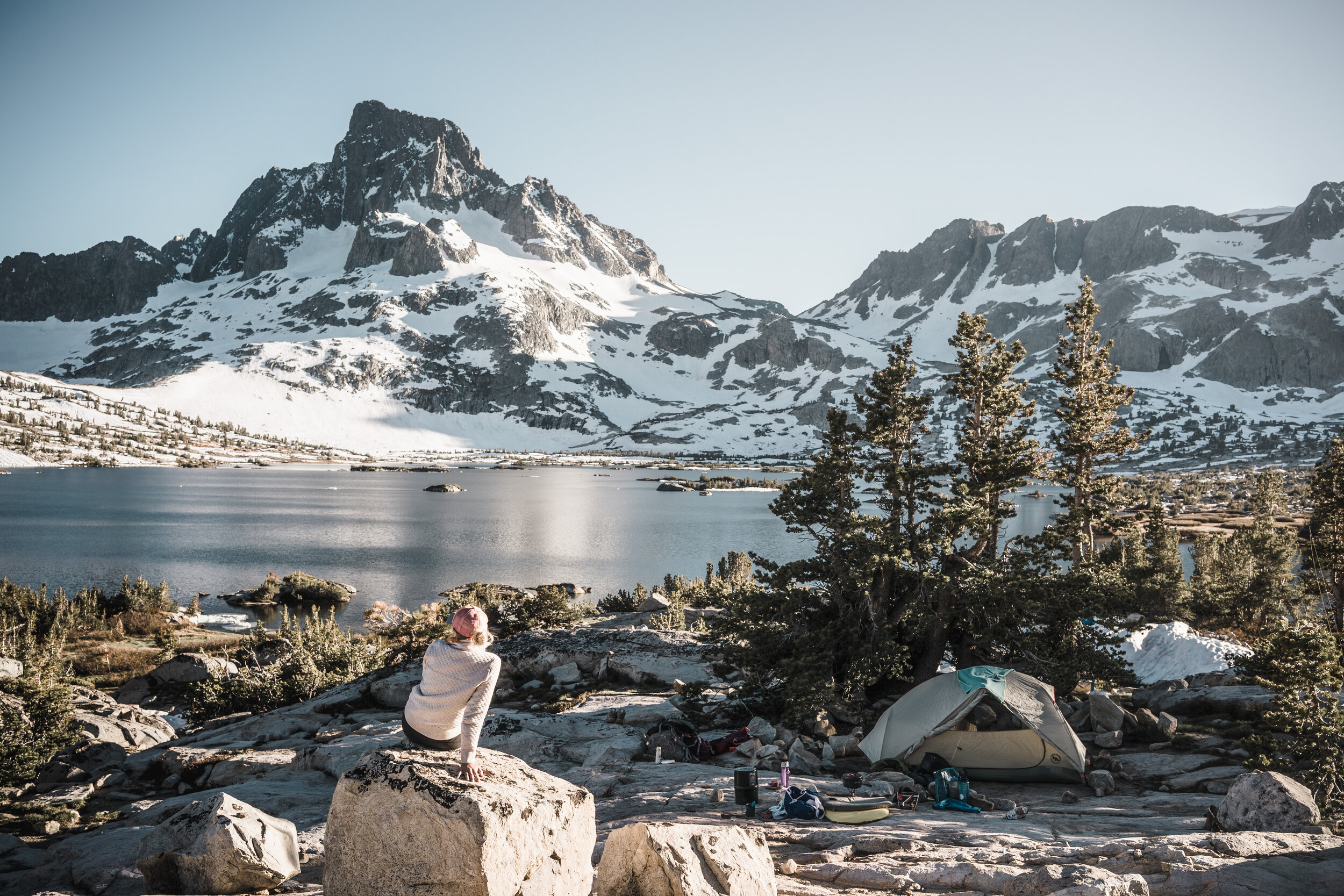
June Lake, California
In the Eastern Sierra region is a string of gorgeous lakes and campgrounds, on the periphery of Yosemite National Park. Grant, Silver, Gull, Gem and June Lake are a handful of the largest bodies of water that decorate this wooded, mountainous landscape. By and large, the town of June Lake and its surrounding wilderness is one of my favorite places to seek reprieve in east-central California.
My foremost favorite camping place is tucked beside Reversed Creek, downstream and south of Gull Lake: Reversed Creek Campground. This spot is in town and less than one mile from several restaurants and the June Lake General Store. Yet, the campground feels like a remote, high-country escape. Dylan and I car camped there the nights before and after our backpacking trip to Thousand Island Lake.
This campground is located in Inyo National Forest, so it’s USFS-managed. The campsites are reservable and $23 per night. Also, this is bear country! Bear boxes are provided with your campsite—don’t forget to use them.
Read more about backpacking in my blog, “How to Get Started Backpacking.”
Lake Dillon, Colorado
Seventy miles west of Mile High City is Dillon Reservoir, a freshwater bowl spread across five square miles at 9,000 feet high. The high-altitude reservoir is surrounded by the towns of Frisco, Silverthorne, and Dillon, Colorado.
I love Prospector Campground, which is accessible from Denver but feels so secluded. From the campground, you can walk the perimeter of the lake and go stand-up paddleboarding! Though paddling is allowed, swimming is NOT. Apparently, the cold water temperatures are a concern! As the sun sets, you can soak up the silhouettes of Swan Mountain and Tenmile Range.
This campground is located in White River National Forest. Campsites are reservable ($23-$28 per night).
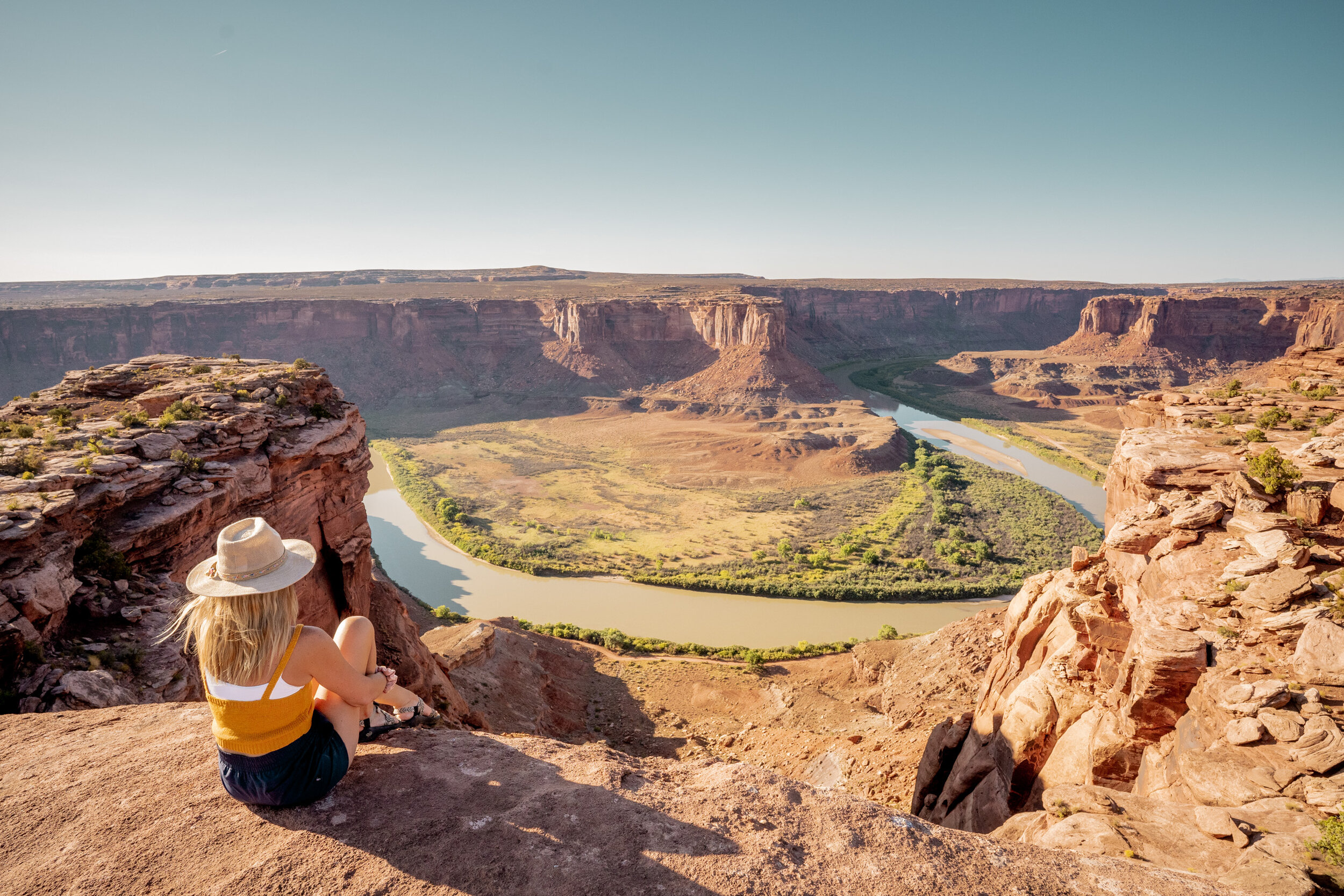
Green River, Utah
Truly, the dispersed camping along Green River, Utah, is unparalleled. Green River is a 730-mile-long waterway with headwaters in Wyoming’s Wind River Range. The Green flows south to eastern Utah, where it takes a detour through northwest Colorado before returning to Utah. Eventually, the river joins the Colorado River.
Incredible camping abounds near this iconic river, from Ashley National Forest and Dinosaur National Monument in the north to Desolation Canyon Wilderness Study Area and finally Canyonlands National Park in the south. And, I believe some precious places are best-kept secret: I can’t disclose my particular favorite camp location. But that’s also within the mystic of camping. You get to discover your own gems in the great outdoors, too.
Ashley National Forest allows dispersed camping, though it must be at least .25-mile away from administrative sites like boat ramps or campgrounds. And, you’ll need to stay on existing roadways to access your camp spot. But the majority of dispersed camping near the Green River falls within BLM management. Freecampsites.net has an easy-to-read map that shows where the Green River runs, as well as ideas for dispersed camping.
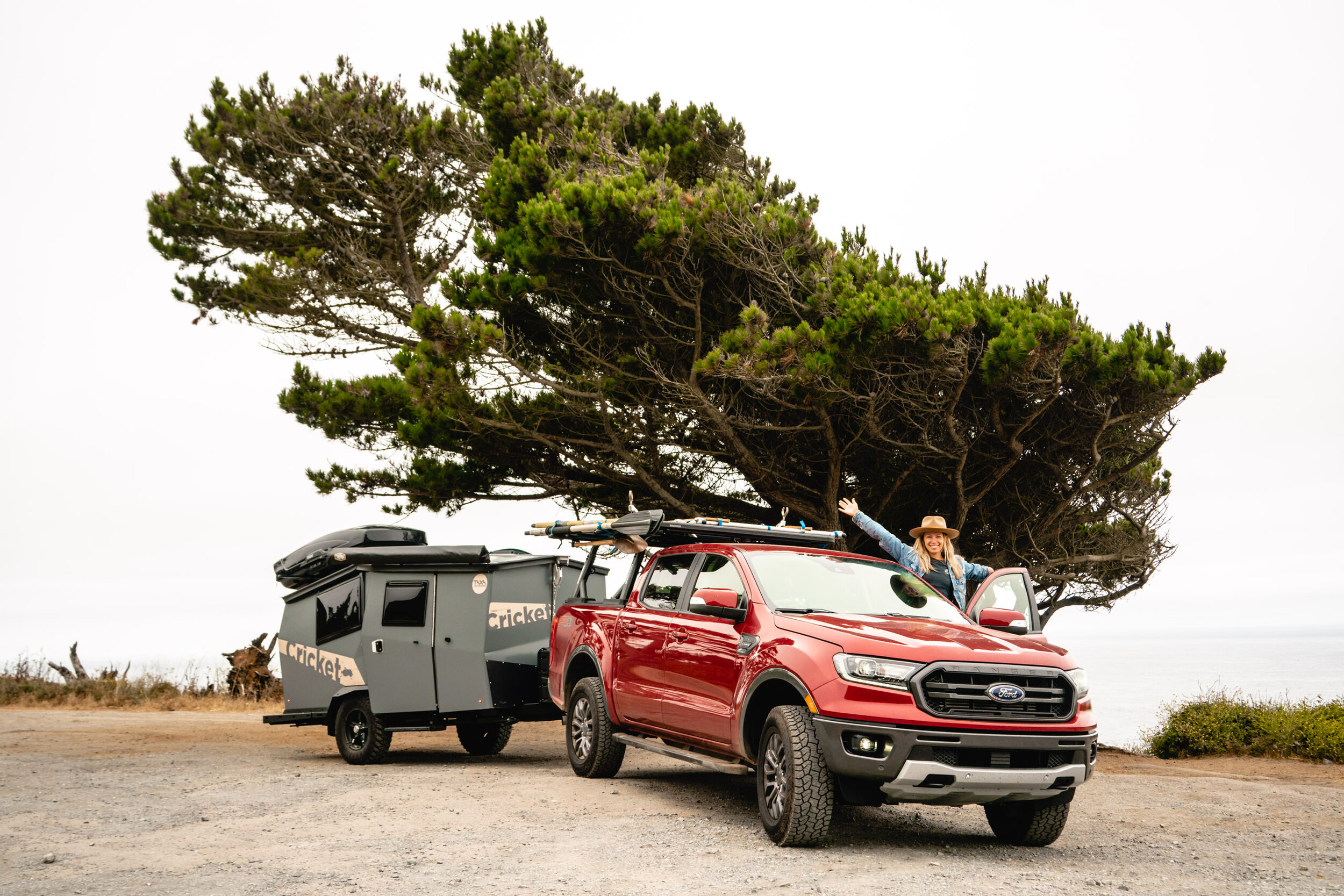
Big Sur, California
The first venue where I camped remains one of the most beautiful on my list. Glamping is simply amazing at Treebones Resort along California’s Central Coast. This haven sits atop the steep, rocky coastline of Big Sur and below the Santa Lucia Mountains, which are coated in dense chaparral. You can pitch a tent on the property while still enjoying the resort’s private amenities including showers, restrooms, self-serve breakfast, and picnic tables. Their Wild Coast Restaurant and Sushi Bar are on-site, plus a convenience shop with snacks. They shuttle you and your gear to your campsite in a golf cart—LOL! You could also stay overnight in one of the property’s accommodations—a yurt, autonomous tent, human nest, or twig hut—if you aren’t fully ready to establish camp. Either way, you get a taste of traditional camping with luxury garnish and breathtaking views!
Safety for Solo and Group Camping
With each outing under the stars, my confidence with camping has grown. But, I’ve definitely had a couple of anxieties to work on. My number one biggest fear was pooping in the woods followed closely by interactions with animals. I am always so spooked by sounds at night. I have a suspicion that bears are lurking outside my tent—I’ve probably read too many horror stories! That said, there are legitimate safety precautions that you can take to feel and be more secure while camping out—which is key. Have a safety plan in place.
Especially if you are camping alone, bring protection that can help arm you against an unlikely but possible incident. That toolkit could include bear spray, mace, a BASU eAlarm, a satellite phone, or a satellite messenger. During life-threatening emergencies, a satellite messenger allows you to activate an SOS button, which notifies emergency responders with GPS coordinates for your location. Satellite messengers have other features, too, like shareable online maps and text-based messages. On the other hand, satellite phones allow you to make calls from anywhere, regardless of remoteness.
To prepare, buy a traditional topographic map and road atlas for that region. Also, use a digital map, like caltopo, to familiarize yourself beforehand with the terrain and roads. Every map offers slightly different information. Download any digital maps or driving directions you want to use. But also, write down the directions you need, old-school style, or print them off. Have a general idea about how far away the closest town, gas station, grocery store, and emergency care center is to where you plan to camp. ALWAYS keep extra water and food in your rig, in case you need to spend an extra night out in the middle of nowhere. And don’t forget your spare tire!
You can bring your cell phone, which is handy for capturing pictures, but don’t depend on having reception during your trip. Even if reception happens to exist, your cell phone could slip off the tailgate and break, fall out of your pocket and get lost, or the battery could die. It’s not a good idea to depend on it!
Before you head out, tell someone at home, a colleague, or family member where you plan to camp and when you’ll be back. Share your itinerary with them. If anything happens, they’ll know where to look for you.
Camping Etiquette: Leave No Trace
Whether you’ve created your overnight nest at a campground or in the backcountry, be mindful and respectful of the land and wildlife. Be aware and considerate of the other recreationists who are camping near you, as well. Overall, the goal with camping is to tread lightly and follow Leave No Trace (LNT) principles.
One big LNT elephant-in-the-room we need to discuss is noise. For many cultures and people, music is an avenue to celebrate and connect. I’m a supporter of tunes BUT preserving sound-space at campgrounds with a hodgepodge of groups is important. Many people venture outside to find solitude, communion with nature, and a reset from everyday or urban stimulation. Camping is a good time to tone down technology, loud beats, revving engines, hooting and hollering. Most campgrounds have quiet hours posted for guests to follow. Noise could also include yappy pups and disobedient kids! Obviously, the happiness of your pet and young ones is essential but be ready to address those situations in a potentially public campground space: What solutions will you have to help ease the moment?
Aside from clamor, be cognizant of boisterous artificial lights or dogs running off of their leashes. Be gentle on the earth. Don’t trample the ground or remove rocks and other pieces of the natural environment. Remember to pack EVERYTHING out. Even microtrash and food scraps. Also, the COVID-19 pandemic is a reminder to respect social distance until someone communicates otherwise. If you have campground neighbors, ask how close you can be, if you should put on a mask, and wave rather than shake hands.
To plan for your camp kitchen, you’ll need to research whether or not fires are allowed at your particular campsite. Is there an existing fire ring? What type of wood are you permitted to gather from the surrounding area? And, is there currently a fire ban in the area? Educate yourself and stay safe! To minimize the impact, let the wood burn to ash and put out the fire with water rather than dirt. Also, don’t burn garbage or food, which can harm animals. For camp clean-up, don’t wash dishes directly in a lake or stream. Instead, fill a container with water and biodegradable soap. Afterwards, strain the water, pack out the contents, and scatter the remaining liquid 200 feet away from any water sources.
Many established campgrounds offer restrooms. If you’re camping where one doesn’t exist, the area’s land management agency will have information on their website about how to manage human and pet waste. Always pick up after Fido! For humans, there are two general options. Commonly, you’ll need to dig a cat hole that’s 8-inches deep and 200 feet away—about 70 full steps— from water. It shouldn’t be where people would hike or camp. Put used toilet paper or tampons in a plastic bag and pack them out. Or, you might need to pack out poop in a human waste bag like these biodegradable toilet kits or this waste bag.
Lastly, you don’t NEED to share your camping location with the whole world on social media. It’s beneficial for people to keep some places a mystery, so that others can unearth them on their own, too.
Ultimately, your presence shouldn’t interfere with the experience of others—now or in the future—who are also trying to enjoy the outdoors.
Read more about Leave No Trace (LNT) in my blog “Outdoor Ethics: Leave No Trace and Geotagging.”
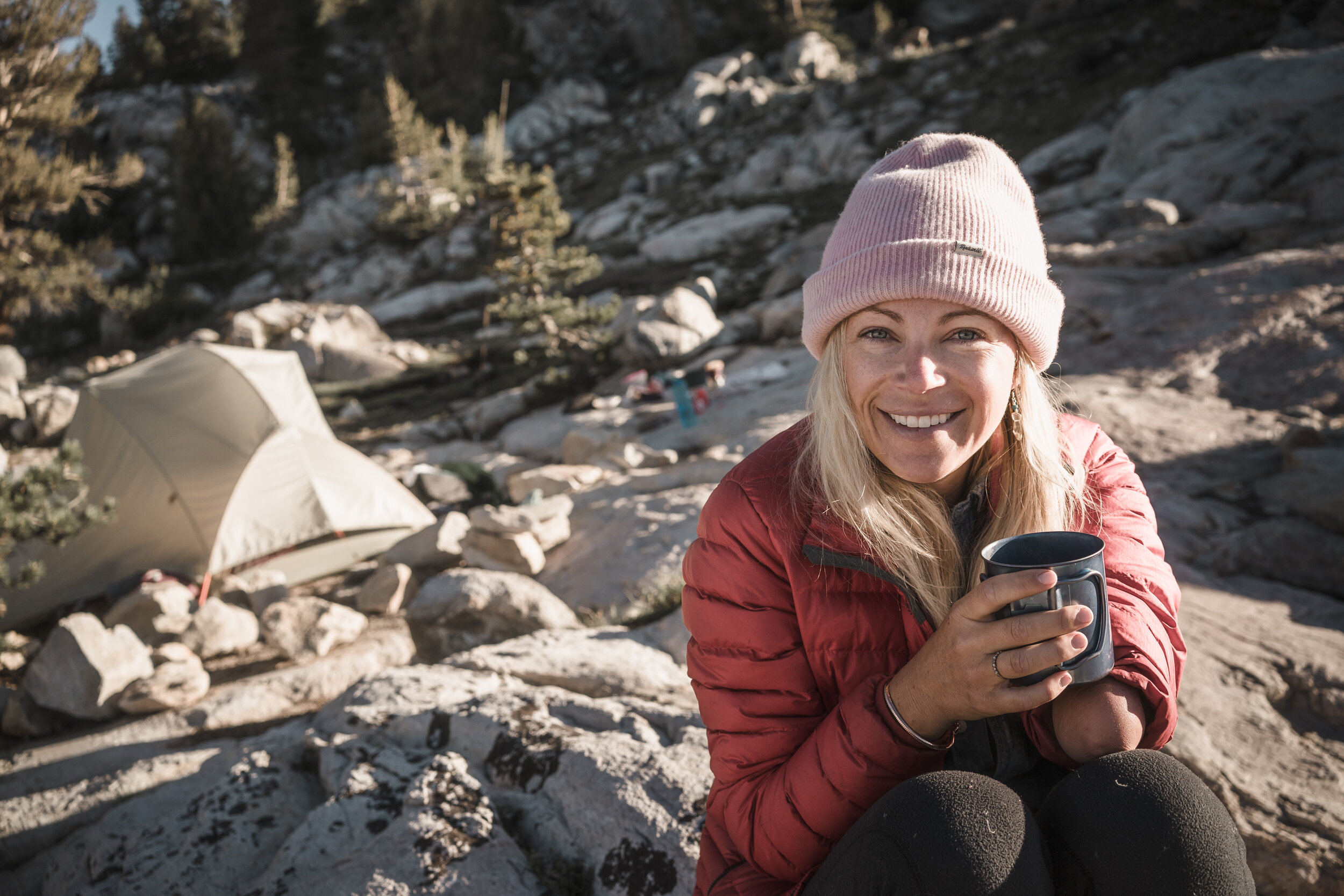
Why You Should Go Camping
Camping can be a landing dock to dabble in other outdoor activities like fishing, canoeing, stand-up paddleboarding, hiking, or mountain biking—and the list goes on. But to be a “camper,” you don’t need to deep-dive into multi-day river trips or thru-hiking. Actually, you don’t need to do anything else besides purely camp. The essence of living outside is SO enough. Camping is such a simple, wonderful way to free the mind and also realize your independence. I hope you give yourself time to savor a night beneath the constellations, soon!

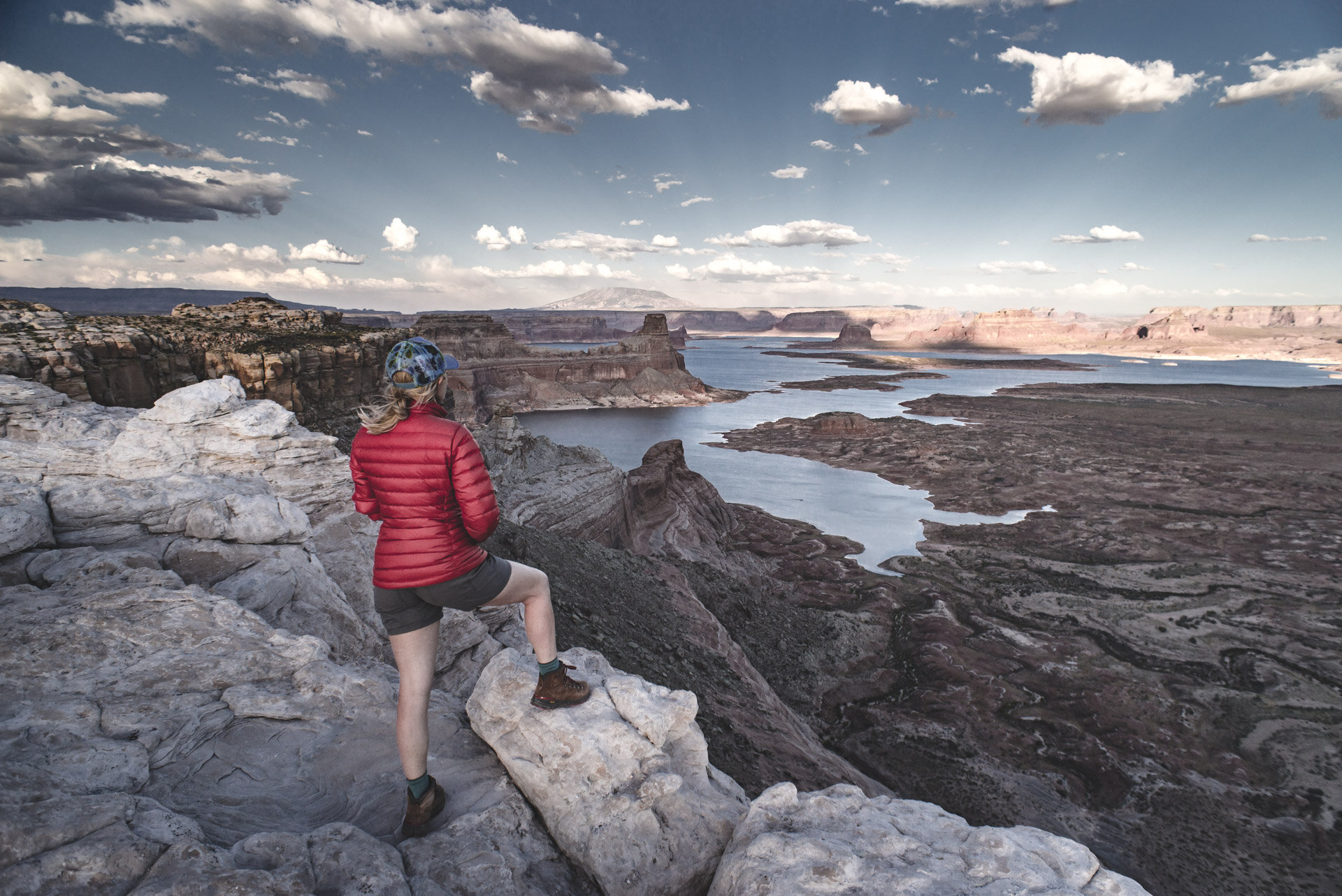
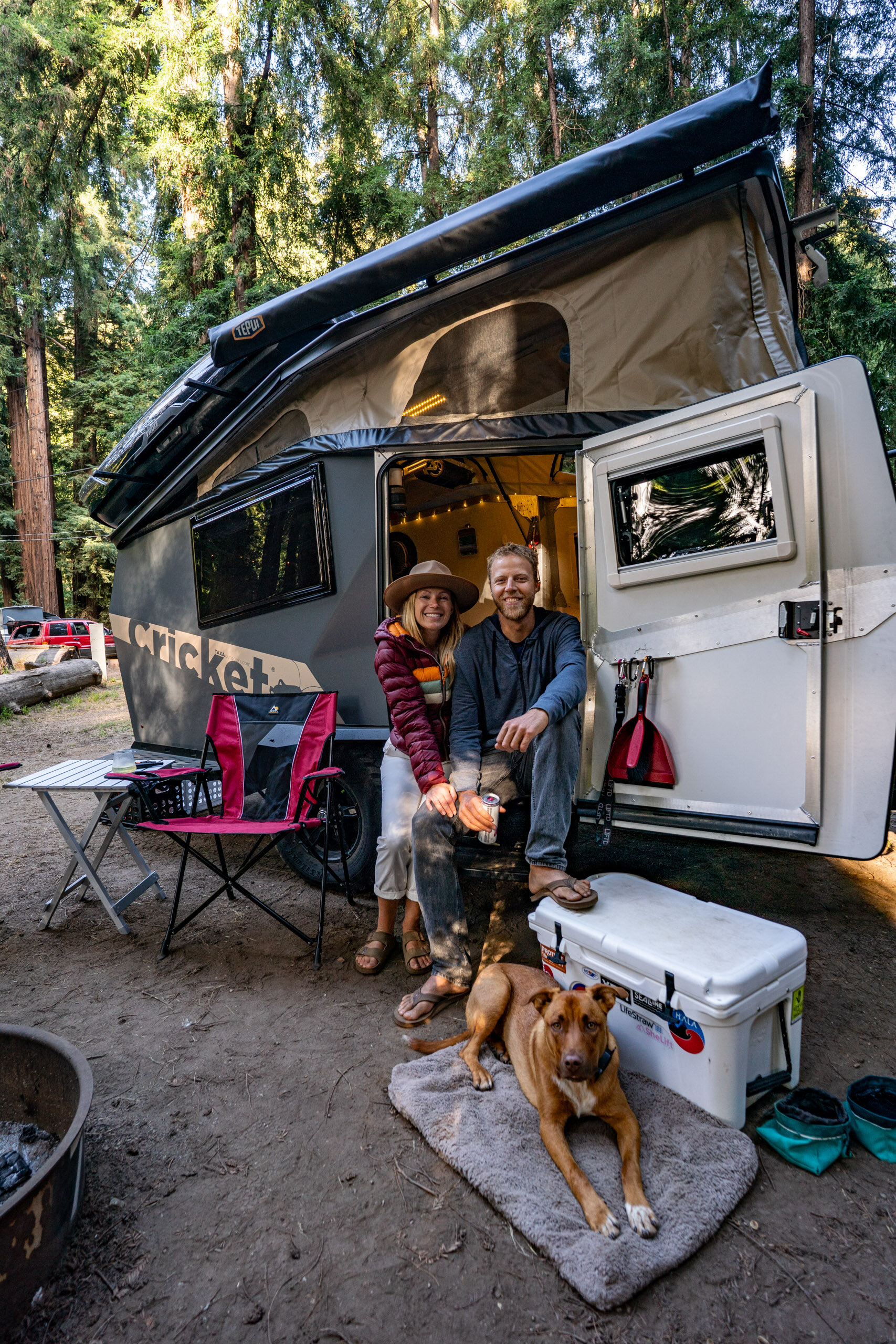
Comments +